Print studio
File, test, print… and straight on to finishing
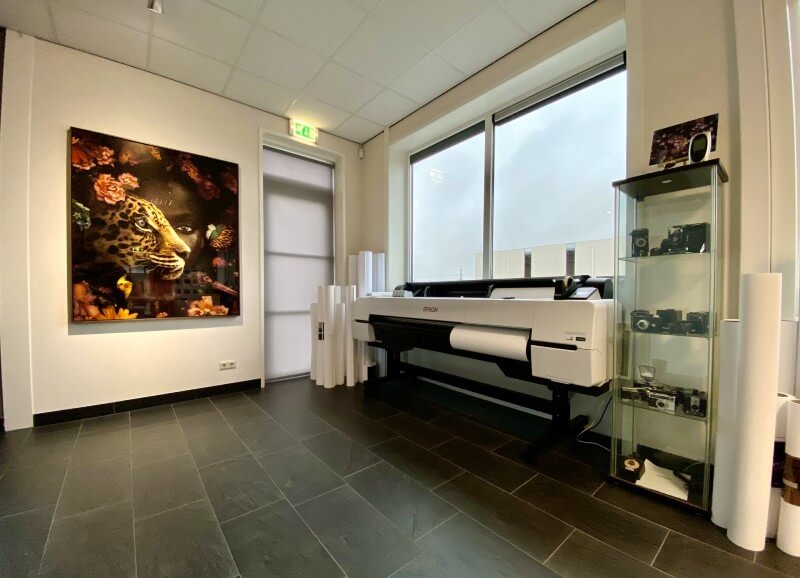
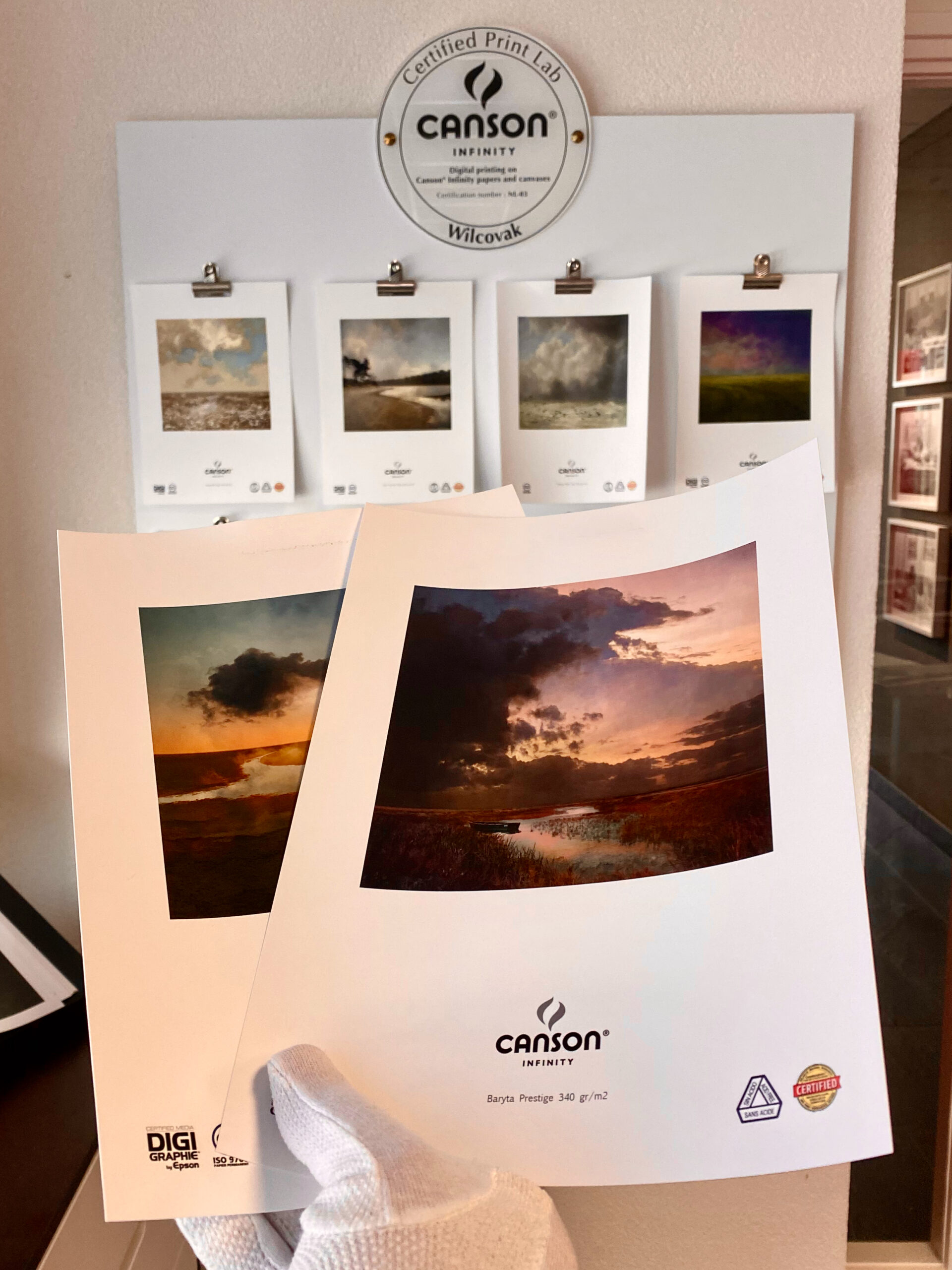
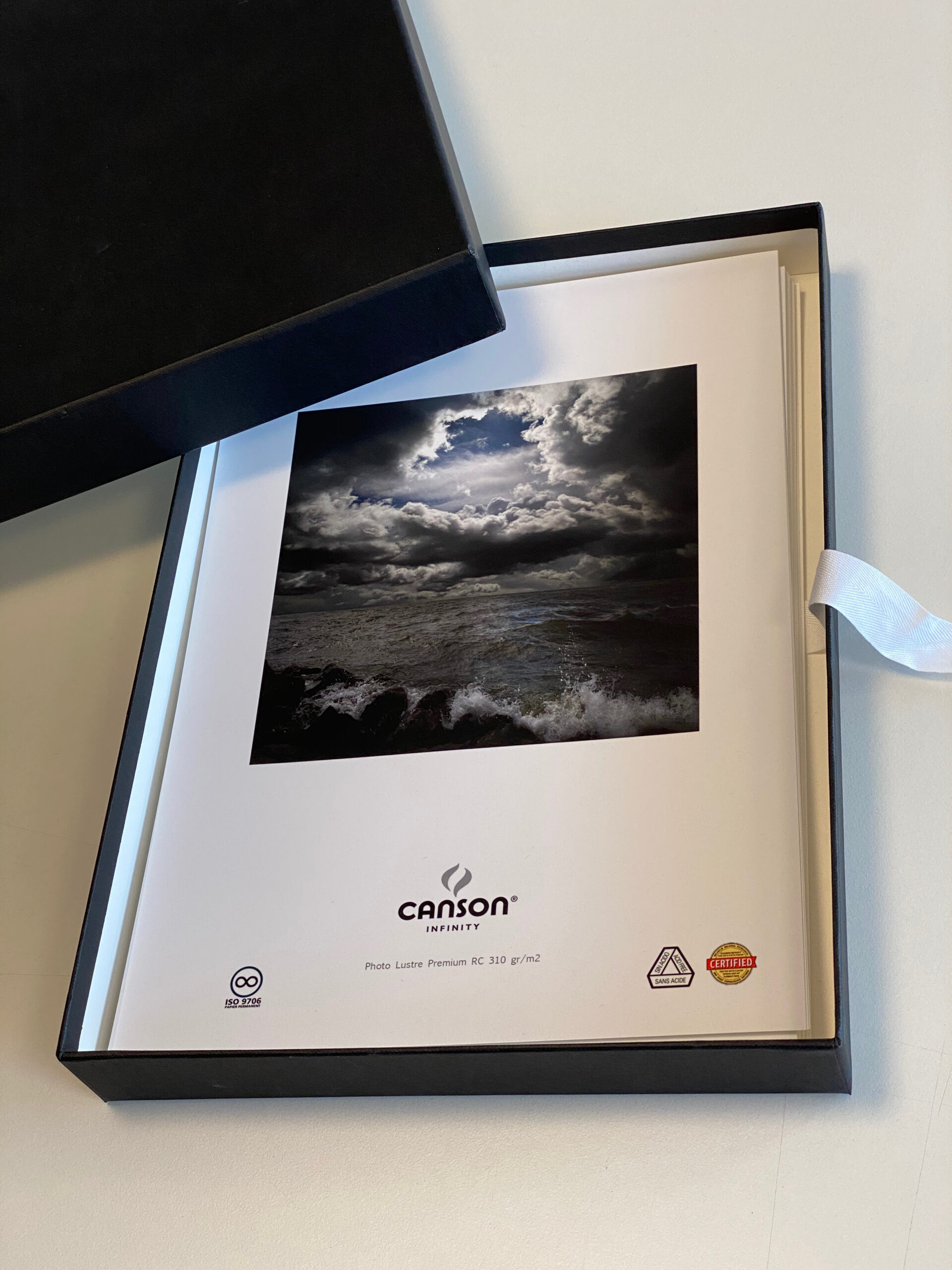
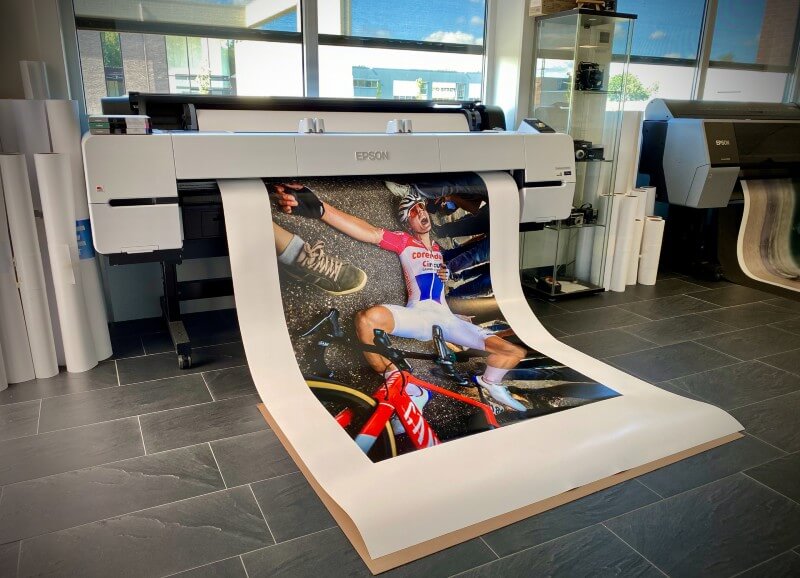
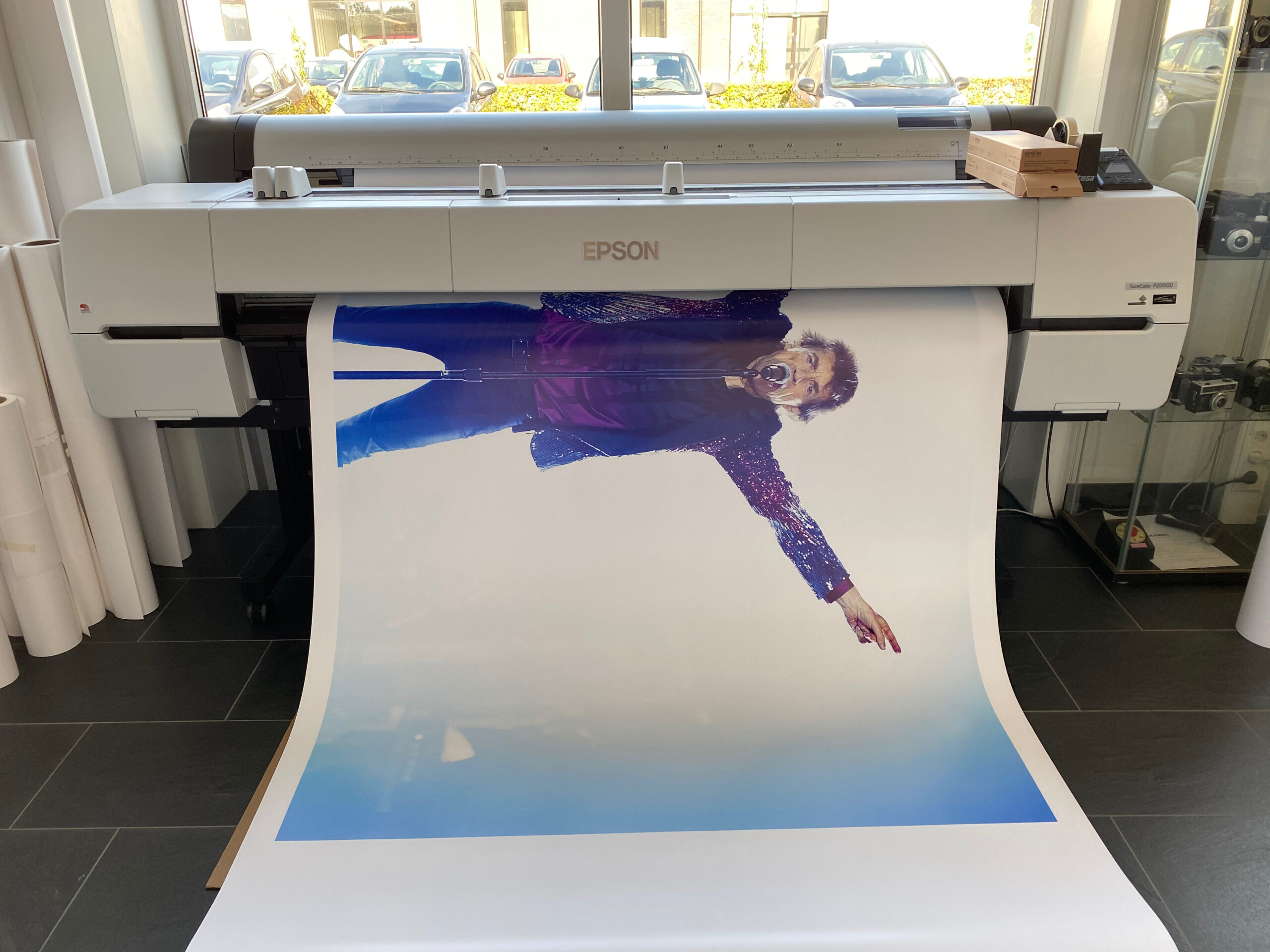
Different kinds of prints:
Fine art, pigment or giclée print?
It’s all the same, everything is an inkjet print. However, it is not the same as an office printer, that is really of a different order. Only the technology is similar.
Fine Art Print:
This usually refers to an inkjet print on high-quality paper. Paper that preferably meets the museum ISO9706 standard. This means that it is made of 100% cotton, is acid free and free of OBA’s.
Giclée print:
“Giclée” is an old name for a reviously used printing technique using an Iris printer developed in the United States in 1985. The neologism Giclée print for an Iris print was invented at the time for art prints to avoid the connonation with a simple office inkjet print. The French verb ‘gicler’ literally means spray, spout, or squirt.
Despite the high print resolution of an Iris print, the moderately lightfast dye ink has now been superseded by today’s long-life pigment inks.
Some companies and artists like to use the term Giclée for the current inkjet printing technique even today.
Pigment Print:
Previously, dye ink was used in inkjet printers. Dye, however, proved to have a very limited life span. Pigment appears to have a very long life and is therefore currently popular in today’s inkjet printers.
At Wilcovak, we like to use the term ‘Archival Pigment print’: a long-lasting inkjet print.
Want to know more about our print studio?
Which Fine Art Paper is suitable for your print?
- First of all, we will discuss a number of issues with you:
- is it a colour or black-and-white print? read more…
- desired format read more…
- desired paper and structure of the paper read more…
- What is the purpose of the print? Will the print be mounted and framed or will it be glued in Diasec®? read more …
- sustainability and vulnerability: read more…
- price ….
Delivery specifications:
-
-
-
-
- Through our Wetransfer channel
- RGB Tiff from Psd in AdobeRGB *
- Best to deliver without layers
- We prefer to do resizing for you if needed
- Always specify the desired format; width x height
- Pdf files are undisered for artwork, as it can cause cropping problems. In such a case, please send a screenshot.
- Tip: give your file a logical (working) title so that you and us can refer to it throughout the process.
-
-
-
* You must set AdobeRGB yourself in Lightroom or Photoshop when processing RAW files. You can use this during file processing for the best result. Sometimes there may be a reason to use a different profile. We will gladly provide you with further information.
Tiff is the best format for saving your file
No Jpeg...
This format is used for web, not for print.
ICC profiles
Please contact us for advice on this!
Quality and editions: Digigraphie®
Questions?
FREQUENTLY ASKED QUESTIONS
What is the maximum size that Wilcovak can print?
We can print a maximum width of 162 cm. This is the maximum achievable on fine art paper. Length is not an issue as the roll length is 15 meters.
Not all types of paper are available on the 64″ rolls. Canson paper goes up to 60″ (150 cm). If you want to print up to 160 cm, for example, it is necessary to switch to another brand and type of paper (e.g. Epson – Enhanced matte or Hahnemuhle).
maximum widths of prints in the Netherlands:
lambda prints: 125 cm
fine art prints: 160 cm
What fine art paper types are there?
There are many types of photo paper on the market. We choose to use only high-quality papers such as Canson Infinity and Hahnemühle.
A huge choice of paper makes choosing difficult. That is why we have chosen the Canson Infinity range: these papers are acid-free, OBA-free and have a base of natural fibres without dyes. The best choice for art. Read more about these papers…
smooth, even surface:
Canson gloss or photosatin or lambda printing?
The whiteness of these papers is characteristic. Whiteness means whiteners (OBAs) in the paper. This is undesirable regarding the durability: the whiteners wear off. Moreover, with UV protection through museum glass or Diasec®, the fluorescent function of the whitener is deactivated. The advice for art is to avoid paper with whitening agents.
Metallic prints: A smooth surface with a metallic high gloss. Particularly suitable for example high-contrast photos and night shots with many light effects.
structure in the paper: fine-art or pigment (or so you wish, giclée prints)
These paper types usually have a matt appearance. A Rag Photograhique has almost no structure, whereas an Aquarelle Rag has a coarse structure. But there are papers with nuances between these two extremes.
What prices are charged for fine art prints?
If you would like us to work with other types of paper, we are certainly open to that.
We do nothing on automatic pilot. We check the files, send sample strips and think with you.
Nor do we have fixed formats. You can even indicate how much white border you like around the image.
You will understand that with these personal and qualitative features, we cannot offer the lowest price. We do not provide price lists because we work fully customised and are happy to advise you.
You can request your personal quote here.
How long will a fine art print last?
- good quality printers
- quality paper, without OBAs, acid-free and preferably with natural materials without colouring agents
- high-quality inks, such as Epson’s Ultrachrome HD-inks.
The combination of printer, paper and ink together with the handling of the prints (such as evaporation) is important.
If the print has been archived for a while, storing it flat in the dark is best.
What are OBAs or optical brighteners?
The OBA can absorb radiation between 300 and 400 nm and convert it into the visible blue part of the spectrum between 400 and 500 nm. Since blue
is complementary to the yellow colour, the paper will therefore appear whiter. OBAs are unstable molecules and can yellow over time, leading to discolouration of the paper.
Wilcovak
…is like no other:

Everything under one roof

Personal

Museum quality

Our own transport service
Reviews
What customers think of us
Great service. Superb printing and finishing work. Very professional and extremely friendly!
The highest quality prints, lots of personal attention, a super team to work with!
Hans Wientjens
